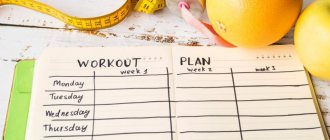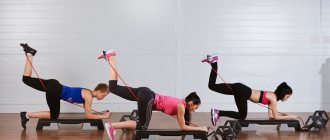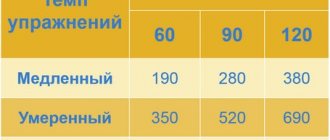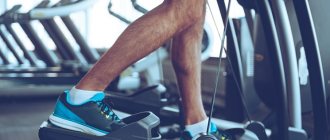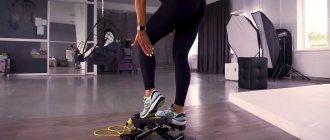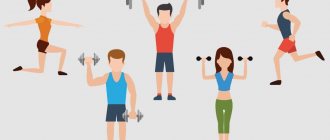Bodyweight exercises are a simple, but at the same time one of the most effective ways to get your body in order. Plank is one such exercise that you can do at home.
The plank is a static physical exercise in which the muscles of the abdomen and lower back are tensed, in which you need to hold on for as long as possible.
What happens if you do a plank every day?
What does the bar give?
Start doing the exercise every day and seven pleasant changes await you.
Core muscles will become stronger
The dream of many of us is a flat stomach with clearly defined muscle cubes. Developed core muscles provide support for internal organs, allow you to constantly maintain a straight posture, maintain a healthy back and make your waist narrower.
- The plank simultaneously engages all major muscle groups of the core:
- rectus abdominis muscle - responsible for the “pack” and helps to jump better;
- oblique abdominal muscle - responsible for twisting at the waist and the ability to bend sideways;
- back extensors - support and protect the spine, responsible for keeping the back straight;
- gluteus maximus muscle - will create a beautiful profile and support the back.
The core muscles are the only muscles that can be trained while remaining stationary.
Performing the pose will allow you to form a muscle corset without the risk of unnecessary stress on your back and hips.
The condition of the back muscles will improve
Regular planking will strengthen not only your lower body, but also your upper body, which will reduce the risk of back pain.
Scientists at Columbia University have proven that regularly performing the side plank reduces pain in osteochondrosis by almost 40%.
Metabolism will speed up
The plank burns more calories than classic abdominal exercises such as crunches and squats. If you do the exercise daily, it will not only ensure a fast metabolism throughout the day, but also improve your overall metabolism (even while you sleep).
Posture will improve
This exercise is a great way to improve your posture. By strengthening the muscles of your neck, shoulders, back and lower back, it will be easier for you to keep your back straight. Once you start doing the plank, people around you will notice your improved posture.
Develop a sense of balance
How long can you stand on one leg? If it’s just a couple of seconds, you urgently need to strengthen your abdominal muscles. A developed sense of balance will help you achieve great results in any sport.
Improved flexibility
Standing in a plank stretches the muscles and ligaments attached to your shoulders, shoulder blades, collarbones, hips, even your toes. The side plank works the obliques and increases flexibility throughout the body.
Your psychological state will improve
The plank stretches exactly those muscles that accumulate stress and tension in the body. Doing it daily will improve your mood and have a positive effect on your entire nervous system. This is especially true for office workers who sit almost all day.
What opportunities does exercise provide?
The plank exercise is:
- Saving time (with minimal time spent - maximum benefit to the body)
- Saving money (no equipment required, no need to go to a paid gym)
- No requirements for conditions (you can do the plank at home, at work, outdoors, at any time and in literally minimal space)
- The ability to work with those types of muscles that are necessary for you (you can choose your own from the many types of “bars”)
- Enormous benefits and accessibility for everyone
- Beneficial effect on the psyche (calms, relieves anxiety and stress)
- The opportunity to transform your body in just 30 days
- Plank is harmless and safe.
An excellent option for a dramatic change in figure
What exactly does the “bar” do?
- Reduces weight, really removes fat deposits, cellulite
- Corrects posture
- Improves flexibility
- Increases stamina
- Improves the functioning of the vestibular apparatus
- Strengthens the health of the body by working the core muscles of the body
- Invigorates, gives confidence and the desire to achieve success in planned activities, puts you in a positive mood
- Tightens the muscles of the abdomen, sides, buttocks and thighs, reduces waist size
Is it possible to lose weight by doing planks?
The static exercise itself does not produce a fat burning effect and does not reduce weight. With the right approach, this promotes weight loss, since static loads force the body to intensively expend energy reserves, and this means burning calories.
Plank for weight loss before and after photos:
Types of planks, which muscles work
There are more than 200 types of plank exercises:
- static;
- dynamic;
- on straight arms;
- on the elbows;
- classical;
- lateral;
- reverse (face up), etc.
You need to choose the “bar” that will satisfy your desire. Or perform a five-minute complex to engage all the muscles. In the pictures you can see which muscles work with different types of planks.
Exercise for 30 days
When the basic technique completely submits to you, move on to more complicated options.
After a month of active training with short breaks (as seen in the table above), you should increase your endurance from 20 seconds to 5 minutes.
Of course, you won’t be able to achieve an ideal body in a month with just one plank, but in combination with an elementary diet, your body will noticeably tighten and become slimmer.
Where to begin?
Option 1.
Choose a plank pose based on the pictures above. Decide which muscle groups you want to use and perform this exercise daily. You determine the time for the exercise yourself, do it until you say “there is no more strength” plus another 10 seconds.
Experienced trainers recommend that beginners perform this exercise once a day for up to 30 seconds, doing 2-3 approaches of 10-15 seconds. To start, four sessions a week (every other day) is enough, but each time do it up to your maximum + 10 seconds. Thus, the time in the plank will increase by itself.
To keep your body in beautiful shape, 3-5 minutes of daily plank position is enough, depending on your physical capabilities.
Option 2. Daily complex.
plank 7 minutes
plank 5 minutes
There are two options, they are both basically equivalent in effect. When choosing, base your choice on your fitness level and the amount of time you are willing to devote to the exercise.
All types of planks in one video.
Option 3. A simple way to motivate yourself to practice
You can perform only one basic exercise if the task is to tighten the front part of the body, while increasing the time daily according to the schedule in the picture. Agree, 20 seconds is not difficult? And if you want more, don’t give in to the desire. Follow the schedule. For convenience, you can print it out, hang it on the wall and make notes daily about completing the stage. If you find it difficult to organize yourself and do exercises daily, this option is the best for you.
For beginners, I recommend starting with the elbow bar, then complicating the task by reducing the number of points of contact. That is, the next stage:
- straight arm plank
- then plank with leg raised
- plank with one leg raised and the opposite arm extended forward
- then side plank.
New month - a new type of time bar, just like in the picture for the elbow bar
Option 4. Dynamic bar
How to do the plank correctly? Mistakes when performing the exercise and how to avoid them.
The question that inevitably arises before anyone who has seriously decided to start mastering the plank exercise is how to do it correctly in order to get the desired result.
Try to make sure that in your case there are no such moments as:
- Lifting the pelvis above the head
- Raising the head, which causes a deflection in the cervical spine
- Clutching your hands while simultaneously spreading your elbows to the sides
- Deflection in the lower back
- Lifting the shoulder blades up and forward
When exercising without a trainer, we advise you to focus on the reflection in the mirror to correct your position.
Kneeling plank (beginner plank)
A lighter version of the exercise. The body has two points of support: the palms of the hands and the knees. The arms are held in a straight position, but are not fully extended at the elbows. This prevents pinched nerves and inflammation in the elbow joints. The legs are crossed at the knees, the legs and feet are raised up. The body forms an acute angle with the floor line.
It is very important to ensure that the body is held in the desired position not through the efforts of the arms or legs, but through strong tension in the muscles of the back and abs. When performed correctly, it creates the feeling that the abs and back form a tight corset, and the arms and legs practically do not notice the load.
Kneeling plank (step 1)
Kneeling plank (video):
From this position it is convenient to begin practicing push-ups in a lying position. We simply bend our elbows, lower our body so that it is parallel to the floor, and return to the starting position, tensing the arm muscles. Mostly the upper half of the body works.
Kneeling plank (step 2)
Plank with emphasis on the knees (execution technique)
Elbow plank (beginner plank)
Another simplified option, accompanied by less load on the muscles of the forearm, elbow and wrist joints. Ideal for those who have problems with hand joints. Due to the low position of the back, the body forms a parallel line with the floor, slightly rising only in the area of the shoulder blades and neck. All the muscles of the body are well worked out, especially the front surface. Increases resistance to static loads and overall endurance of the body.
Elbow plank
When performing the plank on your elbows, your abs are worked out perfectly, so we recommend it for daily practice. You can start with 10-20 seconds and work up to a minute.
Elbow side plank and twist
The arm on which the emphasis is placed is bent at the elbow. The opposite arm is extended vertically upward.
Side plank exercise with emphasis on the elbow
This bar is added with a thread. This exercise works well on the spine and shoulder girdle.
Dynamic side plank
Plank with rearranged hands
Increased difficulty level of the classic exercise. It involves strong tension in the muscles of the arms, back and abs, and uses the leg muscles well. It is better if it is performed after high-quality training of the classic plank, because otherwise there is a high probability that during the movement the body will move out of the correct position.
The exercise is done from the “classic plank” position. At the same time, we put our arm and leg to the side, then we put the other arm and leg.
Plank with rearranged hands
1, 5, 10 minutes of planks - what will happen to the body?
Let's look at the beneficial effects of the plank using a specific example. As a sample for research, let’s pay attention to the classic bar, because most beginners start working with it. Note the results depending on the duration of the sets. They will tell you how many minutes you need to stand in the plank to lose weight or work muscles.
1 minute
You read the instructions and learned the correct technique, stood up and were surprised to find treacherous quivering abs and wobbly legs! This is not surprising - an unprepared person will very quickly get tired of the colossal tension directed at all muscle groups at once. But let's talk about something pleasant - in 1 minute of planking you burned 5 calories, stretched and surprised your muscles. Blood circulation has improved, the muscle corset is strengthened and receives more oxygen. Beginners should stop at this mark so as not to overstrain unprepared muscles.
5 minutes
5 minutes of perfect planking is a result worthy of respect. During this time, you burned 25 calories, warmed up and tensed every muscle fiber in your body. Speaking of muscles. After 5 minutes in the rack, they should begin to “clog”, which signals that you have received sufficient load and can stop the exercise.
10 minutes
We sing a song to the madness of the brave! Standing in a plank for 10 minutes is a severe test even for a trained body. You got rid of 50 “extra” calories, your abdominal muscles work at full capacity, your posture becomes straighter, and your movements become more confident. It’s worth stopping at this point so as not to inadvertently damage muscle fibers. That's all for today, rest, you deserve it!
Advice: do not chase the duration of the approach. Short but regular exercise will bring more benefits than long and tiring exercise.
While you are standing in the plank, your body is working!
Don’t be under the illusion that the plank can replace a full range of sports exercises or save you from the need to go to the gym. Defined muscles and a slender figure will have to be achieved through labor and sweat, but know that the plank not only facilitates this process, but also turns it into a kind of game. By devoting a few minutes a day to the plank, you provide an invaluable service to the body, prevent diseases of the digestive and excretory system, and also get rid of back pain. Standing in the plank in the mornings or evenings will not become a painful necessity for you. Remember that your health is your treasure, and sports are the best way to preserve it.
We offer you to watch a video with different types of dynamic bars:
